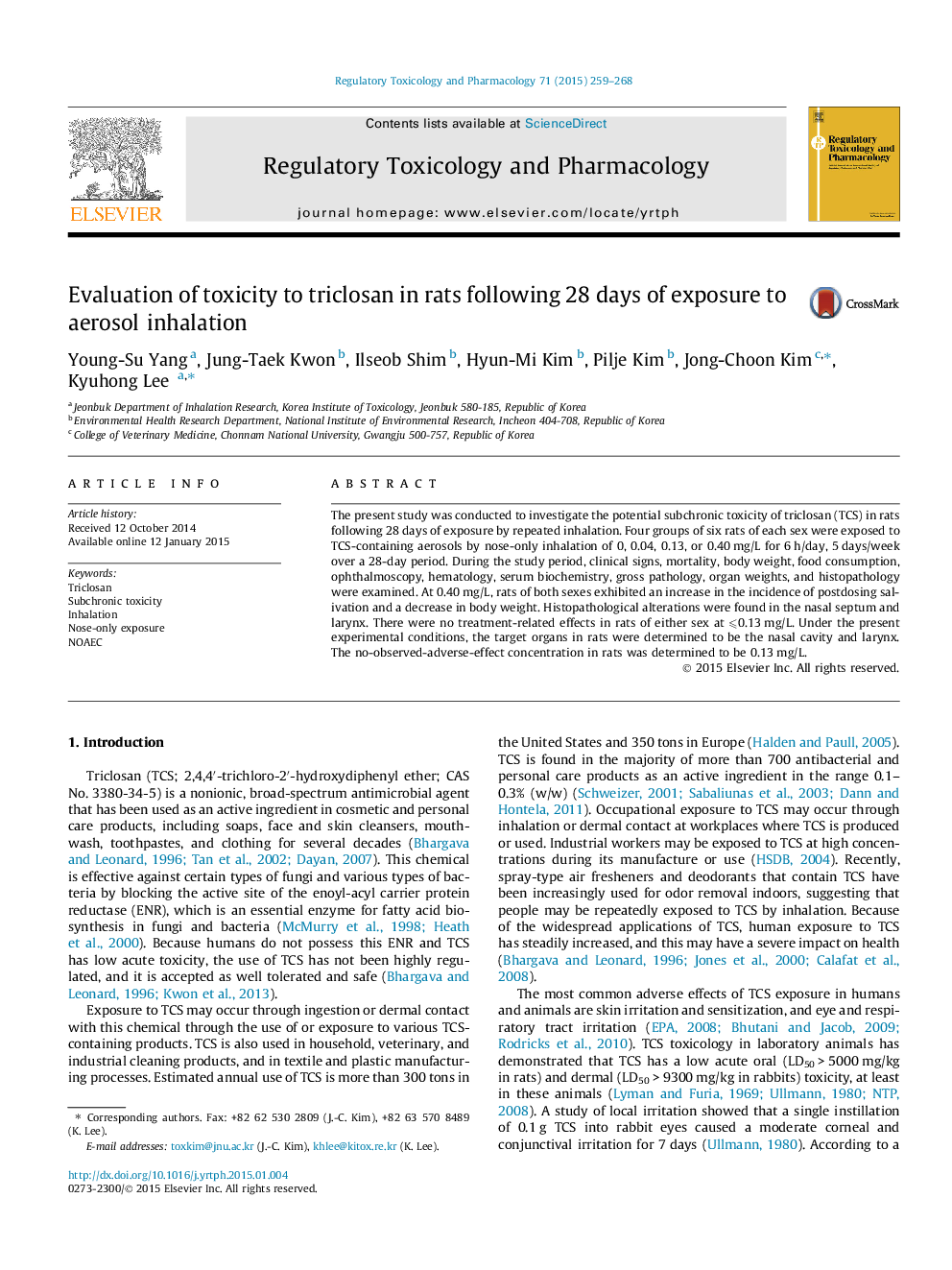| Article ID | Journal | Published Year | Pages | File Type |
|---|---|---|---|---|
| 5856502 | Regulatory Toxicology and Pharmacology | 2015 | 10 Pages |
â¢The subchronic inhalation toxicity of triclosan was investigated in rats.â¢Exposure-related adverse effects were observed in the 0.40 mg/L group.â¢The target organs were determined to be nasal cavity and larynx.â¢The no-observed-adverse-effect concentration was 0.13 mg/L in rats.
The present study was conducted to investigate the potential subchronic toxicity of triclosan (TCS) in rats following 28 days of exposure by repeated inhalation. Four groups of six rats of each sex were exposed to TCS-containing aerosols by nose-only inhalation of 0, 0.04, 0.13, or 0.40 mg/L for 6 h/day, 5 days/week over a 28-day period. During the study period, clinical signs, mortality, body weight, food consumption, ophthalmoscopy, hematology, serum biochemistry, gross pathology, organ weights, and histopathology were examined. At 0.40 mg/L, rats of both sexes exhibited an increase in the incidence of postdosing salivation and a decrease in body weight. Histopathological alterations were found in the nasal septum and larynx. There were no treatment-related effects in rats of either sex at ⩽0.13 mg/L. Under the present experimental conditions, the target organs in rats were determined to be the nasal cavity and larynx. The no-observed-adverse-effect concentration in rats was determined to be 0.13 mg/L.
